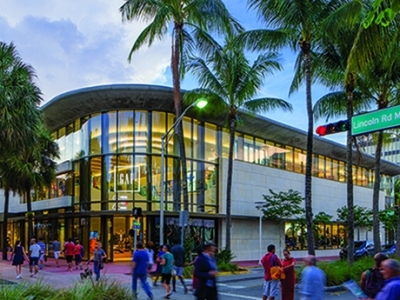Real estate experts from all corners of the industry – residential, retail, office, industrial and law – broke down the do’s and dont’s of the market in South Florida at the Business Journal’s 2015 Market Review, presented by the Related Group and sponsored by Comcast Business, CBRE and Gunster. The panel was moderated by Business Journal senior reporter Brian Bandell.
About 120 attendees gathered at the future site of Related’s One Brickell project, surrounded by the personal art collection of President and CEO Jorge Pérez.
Among the lessons learned at the Market Review were the pros of investing in office vacancy and the cons of buying retail property. There’s money to be made in South Florida real estate, and the six panelists broke down different aspects of the industry.”
Real estate dead zones: What places and tactics experts are staying away from
When navigating the South Florida real estate market, beware of the region’s wide-open spaces and potentially overvalued property. The barriers to successful real estate projects are largely related to cost and scarcity – from residential to office and construction costs to land price, said experts participating in the Business Journal’s Market Review.
In the residential space, neighborhoods without constraints, while initially appealing, aren’t necessarily the best location for in-demand, exclusive product.
“For a residential product, we like to stay away from neighborhoods that have over-zoning, that have an ability to kind of develop a project and potentially develop dilution,” said David Martin, president and owner of Miami-based Terra Group.
Terra tends too look at neighborhoods where a certain type of residential property is scarce, so that when the developer builds, demand for the product is high. That means looking toward neighborhoods like Doral and Weston, where available land is scarce, and avoiding more open markets where a developer would need to create a false sense of scarcity.
“We’re very long on Miami, long-term,” Martin said. “On a short-term basis, [we stay away from] packing a lot of density or trying to create land value, trying to create an urban concept in a suburban neighborhood. The suburban condo product, that is something we’d stay away from.”
On the retail side, property in certain hot spots is so desirable that property values are soaring, but buyers and developers should be careful of flying too close to the sun and getting burned for overpaying.
“We have a pretty frothy market, rents are being pushed up to quite high levels,” said Michael Comras, president and CEO of the Comras Co. A flood of capital is compressing available space in certain areas, driving up the value of real estate to the echelon of the über-luxurious. It’s not uncommon to see property sell for more than $1,400 a square foot in hot spots like Miami’s Design District. Put nine square feet together in the Design District and you could trade it for a low-end Birkin bag.
High prices across South Florida are becoming the norm, but buyers should beware of price tags pushed up by speculation.
“When you have the pending interest rates rising, you really have to be careful with how you [buy property],” Comras said. “You can end up with deals where you overpaid …. There is still a lot of opportunity out there, but you have to be mindful of what is going on.”If there is one real estate sector where scarcity prevails in South Florida, it’s office. Residential developments have pushed land prices so high that building an office over a condominium tower doesn’t make sense. A lack of new office projects has, in turn, created huge demand for existing spaces.
“In the good-quality space, there is less of it available,” said Patricia Nooney, senior managing director with CBRE. “It’s a matter of rent. And rents are clearly rising, whether you’re in Miami, Fort Lauderdale and West Palm Beach. And companies are still getting used to the fact that it’s no longer a tenant’s market.”
For office tenants, finding a space that meets all criteria can be excessively difficult because competition is stiff. In the industrial sector, projects are getting built. But developers shouldn’t build for large tenants because South Florida’s market tends to skew toward small or medium industrial tenants.
“Be careful to design buildings that can accommodate a larger user, but can also subdivide to smaller 10,000 square feet,” said Chris Sutton, VP with Coral Gables-based Flagler Global Logistics. “Don’t build something that is too large for this market.”
The urban development boundary limits the amount of available land in South Florida for industrial, which is a good thing, he added. At West Palm Beach-based commercial law firm Gunster, real estate attorneys advise clients in all segments of the industry. The top complaint among those real estate insiders developing and building new projects or rehabbing and renovating older structures is the cost of construction.
“Rising construction costs tend to be more of a barrier than the land cost,” said Brian Belt, a shareholder at Gunster. “A lot of our work is being generated from internal expansion people are trying to get greater density and intensity in their uses and delaying moves.”
Nina Lincoff, South Florida Business Journal
![]()
Read more here: bizjournals.com/southflorida/

